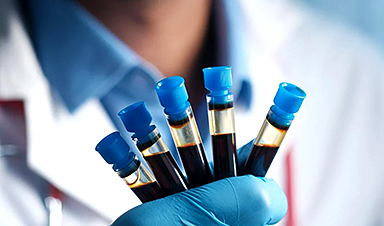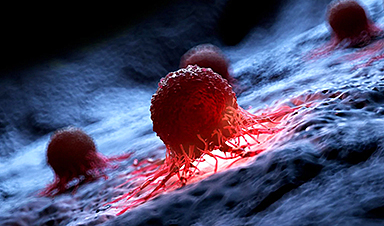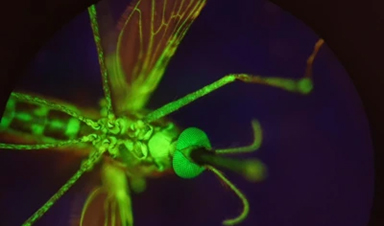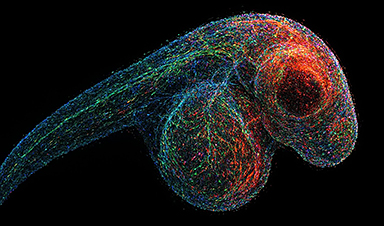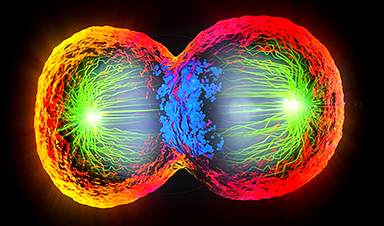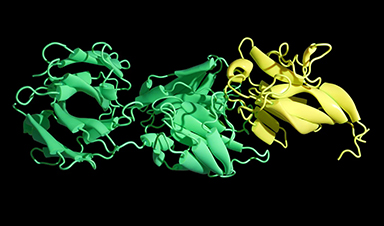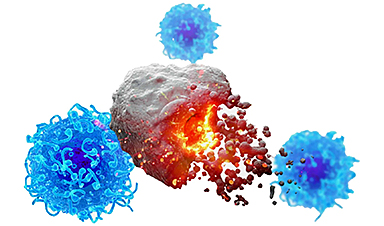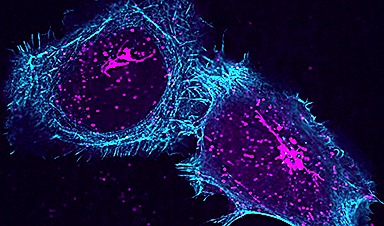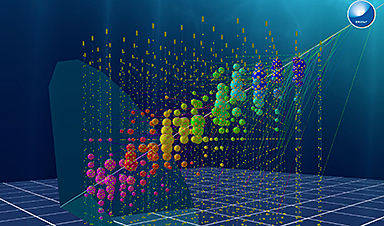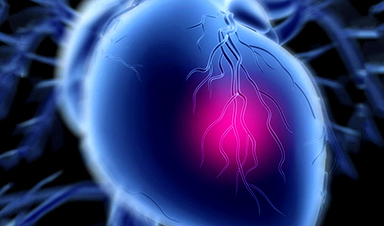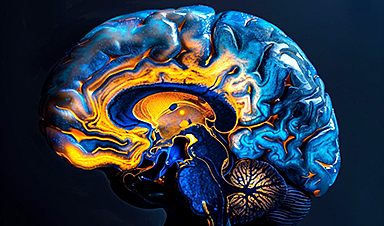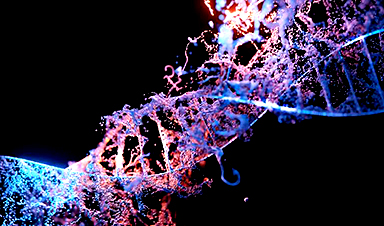Reactive oxygen species (ROS) exhibit the potential to act as signal carriers during the development of malignant tumors. At a suitable concentration, ROS tends to mediate cell growth and signal transduction.
But ROS are known to be a double-edged sword. On becoming surplus, ROS could oxidize proteins, cause damage to the DNA structure and cause cell apoptosis. Furthermore, ROS can induce inflammation at the tumor site, which additionally enhances tumor immunogenicity.
Thus, raising the content of ROS in tumor sites has turned out to be an efficient technique for cancer therapy. Currently, the methods to produce ROS via external stimulations, like radiation sensitization, sonodynamic reaction and photodynamic reaction, are heavily restricted by the laser’s penetration depth, irradiation range of external excitation and safety-related issues of the radiation.
As a result of such issues, chemodynamic therapy has advanced, garnering extensive attention. Chemodynamic therapy makes use of surplus H2O2 in the tumor microenvironment without the need for external energy stimulation to produce ROS via the Fenton reaction.
But the existing therapeutic effect of chemodynamic therapy is considered to be unsatisfactory. This is because the initiation of an efficient Fenton reaction needs surplus H2O2 and rough acidic conditions. Besides exogenous ROS production approaches, increasing the generation of endogenous ROS to curb tumor growth is another potential technique.
Hindering the mitochondrial electron transport chain could improve the generation of ROS. But treating cancer only through increasing endogenous ROS is unsatisfactory, as it is hard to efficiently impede tumor growth with a limited amount of generated endogenous ROS.
Thus, in the field of cancer therapy, it is hard to create approaches for the selective generation of sufficient ROS in the absence of external energy stimulation under mild in vivo conditions.
In the latest research article reported in the Beijing-based National Science Review, researchers from the Changchun Institute of Applied Chemistry of the Chinese Academy of Sciences, China, designed a cascade-responsive ROS generation device with a domino effect and in the absence of external stimulation for the particular generation of numerous severe ROS storms at the tumor site.
The co-authors of the study Yang Liu, Yinghui Wang, Shuyan Song, and Hongjie Zhang have discovered that the simple introduction of the synthesized ZnO2@Ce6/CaP@CPPO/BSA nanobomb into the tumor would induce a “domino effect.”
This in turn could activate the production of several ROS storms and Ca2+ overload, as well as efficiently activate the systemic immune response while hindering the growth of primary tumors. Furthermore, tumor metastasis can be efficiently avoided by adjuvant treatment with anti-CTLA4 checkpoint blockers.
This study received financial support from the National Natural Science Foundation of China, the Strategic Priority Research Program of the Chinese Academy of Sciences, and the Youth Innovation Promotion Association of the Chinese Academy of Sciences.
News
New Blood Test Detects Alzheimer’s and Tracks Its Progression With 92% Accuracy
The new test could help identify which patients are most likely to benefit from new Alzheimer’s drugs. A newly developed blood test for Alzheimer’s disease not only helps confirm the presence of the condition but also [...]
The CDC buried a measles forecast that stressed the need for vaccinations
This story was originally published on ProPublica, a nonprofit newsroom that investigates abuses of power. Sign up to receive our biggest stories as soon as they’re published. ProPublica — Leaders at the Centers for Disease Control and Prevention [...]
Light-Driven Plasmonic Microrobots for Nanoparticle Manipulation
A recent study published in Nature Communications presents a new microrobotic platform designed to improve the precision and versatility of nanoparticle manipulation using light. Led by Jin Qin and colleagues, the research addresses limitations in traditional [...]
Cancer’s “Master Switch” Blocked for Good in Landmark Study
Researchers discovered peptides that permanently block a key cancer protein once thought untreatable, using a new screening method to test their effectiveness inside cells. For the first time, scientists have identified promising drug candidates [...]
AI self-cloning claims: A new frontier or a looming threat?
Chinese scientists claim that some AI models can replicate themselves and protect against shutdown. Has artificial intelligence crossed the so-called red line? Chinese researchers have published two reports on arXiv claiming that some artificial [...]
New Drug Turns Human Blood Into Mosquito-Killing Weapon
Nitisinone, a drug for rare diseases, kills mosquitoes when present in human blood and may become a new tool to fight malaria, offering longer-lasting, environmentally safer effects than ivermectin. Controlling mosquito populations is a [...]
DNA Microscopy Creates 3D Maps of Life From the Inside Out
What if you could take a picture of every gene inside a living organism—not with light, but with DNA itself? Scientists at the University of Chicago have pioneered a revolutionary imaging technique called volumetric DNA microscopy. It builds [...]
Scientists Just Captured the Stunning Process That Shapes Chromosomes
Scientists at EMBL have captured how human chromosomes fold into their signature rod shape during cell division, using a groundbreaking method called LoopTrace. By observing overlapping DNA loops forming in high resolution, they revealed that large [...]
Bird Flu Virus Is Mutating Fast – Scientists Say Our Vaccines May Not Be Enough
H5N1 influenza is evolving rapidly, weakening the effectiveness of existing antibodies and increasing its potential threat to humans. Scientists at UNC Charlotte and MIT used high-performance computational modeling to analyze thousands of viral protein-antibody interactions, revealing [...]
Revolutionary Cancer Vaccine Targets All Solid Tumors
The method triggers immune responses that inhibit melanoma, triple-negative breast cancer, lung carcinoma, and ovarian cancer. Cancer treatment vaccines have been in development since 2010, when the first was approved for prostate cancer, followed [...]
Scientists Uncover Hidden Protein Driving Autoimmune Attacks
Scientists have uncovered a critical piece of the puzzle in autoimmune diseases: a protein that helps release immune response molecules. By studying an ultra-rare condition, researchers identified ArfGAP2 as a key player in immune [...]
Mediterranean neutrino observatory sets new limits on quantum gravity
Quantum gravity is the missing link between general relativity and quantum mechanics, the yet-to-be-discovered key to a unified theory capable of explaining both the infinitely large and the infinitely small. The solution to this [...]
Challenging Previous Beliefs: Japanese Scientists Discover Hidden Protector of Heart
A Japanese research team found that the oxidized form of glutathione (GSSG) may protect heart tissue by modifying a key protein, potentially offering a novel therapeutic approach for ischemic heart failure. A new study [...]
Millions May Have Long COVID – So Why Can’t They Get Diagnosed?
Millions of people in England may be living with Long Covid without even realizing it. A large-scale analysis found that nearly 10% suspect they might have the condition but remain uncertain, often due to [...]
Researchers Reveal What Happens to Your Brain When You Don’t Get Enough Sleep
What if poor sleep was doing more than just making you tired? Researchers have discovered that disrupted sleep in older adults interferes with the brain’s ability to clean out waste, leading to memory problems [...]
How to prevent chronic inflammation from zombie-like cells that accumulate with age
In humans and other multicellular organisms, cells multiply. This defining feature allows embryos to grow into adulthood, and enables the healing of the many bumps, bruises and scrapes along the way. Certain factors can [...]

